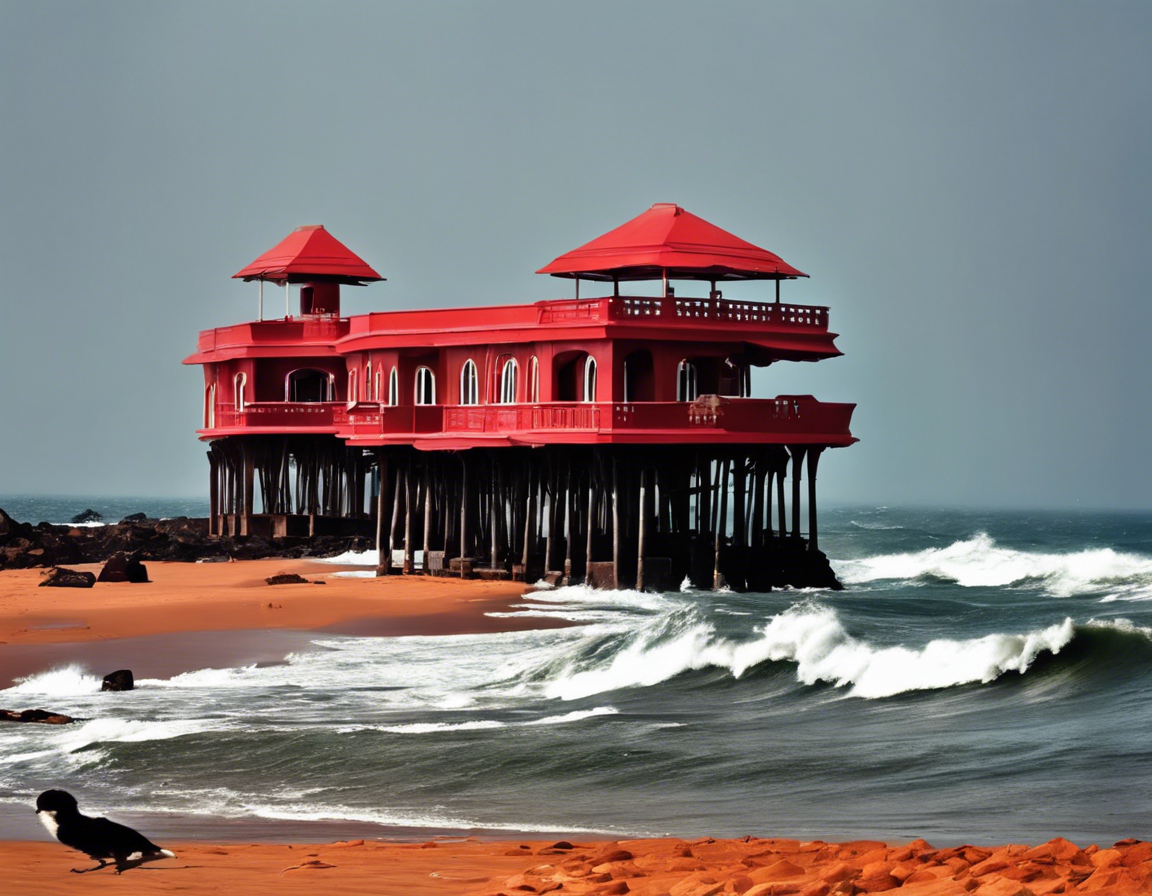The recent red alert issued for the Kerala coast due to the threat of Cyclone Tauktae has raised concerns and highlighted the importance of preparedness and timely action in the face of natural disasters. Cyclones are powerful storms that can cause widespread destruction through strong winds, heavy rainfall, storm surges, and flooding. In this article, we will explore what cyclones are, the impact they can have, how they are classified, and essential tips for staying safe during cyclone events.
Understanding Cyclones
A cyclone is a large-scale weather system characterized by low-pressure centers and rotating winds. In the Northern Hemisphere, cyclones rotate counterclockwise, while in the Southern Hemisphere, they rotate clockwise. Cyclones can develop over warm ocean waters and are fueled by the heat and moisture from the ocean. As they gather strength, they can intensify into severe storms with damaging winds and intense rainfall.
Impact of Cyclones
Cyclones pose significant risks to coastal areas and inland regions, with the potential to cause widespread destruction and loss of life. The primary impacts of cyclones include:
- Strong Winds: Cyclones can produce powerful winds exceeding 74 mph (119 km/h), capable of uprooting trees, damaging buildings, and causing structural damage.
- Heavy Rainfall: Cyclones often bring heavy rainfall, leading to flooding, landslides, and infrastructure damage. The resulting floods can disrupt transportation, contaminate water sources, and pose health risks.
- Storm Surges: Tropical cyclones can generate storm surges, which are elevated water levels that inundate coastal areas, causing flooding and erosion.
- Tornadoes: Cyclones can also spawn tornadoes, adding to the destructive potential of these storms.
Classification of Cyclones
Cyclones are classified based on their intensity and wind speed. The different categories of cyclones include:
- Tropical Depression: A tropical cyclone with maximum sustained winds of up to 38 mph (62 km/h).
- Tropical Storm: A cyclone with maximum sustained winds ranging from 39 to 73 mph (63 to 118 km/h).
- Hurricane/Typhoon/Cyclone: A tropical cyclone with maximum sustained winds of 74 mph (119 km/h) or higher. The classification varies based on the region where the cyclone occurs.
Tips for Cyclone Preparedness and Safety
To stay safe during a cyclone event, it is essential to be prepared and follow safety guidelines. Here are some tips for cyclone preparedness and safety:
- Stay Informed: Monitor weather updates from reliable sources and follow instructions from local authorities.
- Secure Your Property: Secure loose objects, trim trees, and reinforce doors and windows to minimize damage from strong winds.
- Prepare an Emergency Kit: Stock up on essentials such as non-perishable food, water, medications, flashlights, batteries, and first aid supplies.
- Evacuate if Advised: If authorities recommend evacuation, follow their instructions promptly and move to a safe location.
- Stay Indoors: During the cyclone, stay indoors away from windows and doors. Seek shelter in a sturdy building or designated evacuation center.
- Avoid Flooded Areas: Do not attempt to drive or walk through flooded areas, as they may conceal dangers such as submerged obstacles and fast-moving water.
Frequently Asked Questions (FAQs)
- What is the difference between a cyclone, hurricane, and typhoon?
-
Cyclones, hurricanes, and typhoons are all terms used to describe tropical cyclones that form over different regions. In the Atlantic and Eastern Pacific, they are called hurricanes, while in the Northwest Pacific, they are called typhoons. In the Indian Ocean and South Pacific, they are referred to as cyclones.
-
How are cyclones named?
-
Cyclones are named by regional meteorological organizations following a predefined list of names. Naming cyclones helps in communication and tracking of storms and simplifies the process of alerting the public about potential dangers.
-
What is the eye of a cyclone?
-
The eye of a cyclone is a region of calm and relatively light winds at the center of the storm. The eye is surrounded by the eyewall, which contains the strongest winds and heaviest rainfall in the cyclone.
-
How can climate change impact cyclones?
-
Climate change can influence the intensity and frequency of cyclones by warming ocean temperatures and altering atmospheric conditions. Warmer oceans provide more energy for cyclone formation and intensification, potentially leading to stronger and more destructive storms.
-
What should I do after a cyclone has passed?
- After a cyclone has passed, stay indoors until authorities declare it safe to venture outside. Avoid downed power lines, flooded areas, and weakened structures. Check on neighbors, and follow instructions from local officials regarding post-cyclone safety measures.
In conclusion, the recent red alert issued for the Kerala coast underscores the importance of being prepared and vigilant in the face of cyclones. By understanding the nature of cyclones, their impacts, and how to stay safe during these events, we can mitigate risks and protect ourselves and our communities from the destructive forces of these powerful storms. Stay informed, have a plan in place, and prioritize safety during cyclone events to minimize the impact on lives and property.
